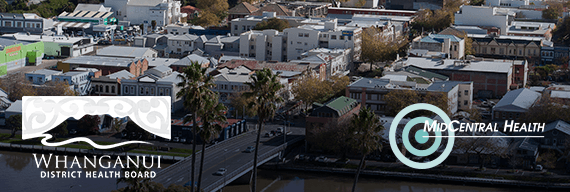Download the full case study here.
Background
centralAlliance is a collaborative agreement between Whanganui and MidCentral District Health Boards. The objective is to develop clinically-led collaborative health services and more effective and efficient shared support services, and ultimately to achieve improved health outcomes for their communities. After an extensive evaluation process Spotless Facility Services was awarded a contract to deliver 21 non-clinical services and one clinical service across both DHBs, including facilities management, engineering, grounds maintenance, and patient and retail food.
The challenge
One of the underlying themes in the Facilities Management service specification was the introduction and implementation of an asset management strategic planning framework. Spotless needed to provide the DHBs with the means to shift from a short to medium term planning horizon to one beyond 20 years, consistent with the nature of the assets and Treasury’s across-government reporting requirements. This meant providing the DHBs with the information, systems and decision support tools to:
- Integrate asset management into strategic and operational planning functions
- More effectively manage and optimise the life of existing and future assets
- Establish an effective asset monitoring program to improve planning information
- Generate a shift from judgement based to evidence based decision making
- Implement an asset specific decision and prioritisation process based on full life cycle costs, benefits, and risks of ownership
With the government’s increased focus on effective capital planning and reporting, and the Auditor General’s assessment that “most DHBs do not keep their asset planning up to date”1, the need for quality “asset intelligence” has never been greater. In addition, capital funding constraints combined with the global financial crisis and Canterbury earthquakes has created an even greater imperative for the Public Health Sector to make better use of the existing asset base. Spotless saw the opportunity for the centralAlliance partners to become asset management leaders within the sector.
1 Part 4.33,Health Sector: Results of the Audits, Controller and Auditor General
The solution
Spotless Facility Services uses SPM ASSETS software for asset planning and asset management across more than 20 contracts in New Zealand and Australia. It recognised the value of the software as a core component of its response to the centralAlliance asset planning and management requirements. It also recognised SPM Assets’ significant knowledge and expertise in designing and implementing integrated asset management solutions, and in the tasks of asset verification and asset quality assessment.
Spotless assembled an asset survey team to deliver the detailed asset verification and condition assessment project. Using SPM Assets’ Mobile running on web-enabled tablet devices 90% of the DHBs’ facilities were surveyed over a two month period, with the balance completed in the following months. Information on infrastructure assets was harvested from a variety of sources, including engineering drawings and as-built plans, and uploaded using a data template proved by SPM Assets.
The assessment and collection of biomedical asset information was important because of its criticality and challenging because of its nature. SPM Assets provided advice on database structures, reference information, and data collection methods. It also provided guidance on database reconciliation and approaches to lifecycle analysis and forecasting, reflecting the unique nature of biomedical assets, i.e. where replacement is typically driven by technological obsolescence, maintainability, supportability, and changing service delivery.
The extraction of data from the BEIMS Works Management System, the DHBs fixed asset registers, and a number of other data sources, and consolidation within SPM Assets meant that for the first time all the necessary “data threads” were brought together into one coherent data set. Business processes were established to maintain linkages between the originating data sets and SPM Assets, providing a pragmatic balance between accuracy and currency, and the cost of data collection and assimilation.
The outcomes
The original implementation of SPM Assets’ software and creation of a detailed asset register was a significant undertaking. It succeeded in achieving intended outcomes because of clear objectives, strong client commitment, effective project management, and dedicated resource allocation throughout the process. Through the project and use of SPM Assets software Spotless has provided the DHBs with:
- Appropriate and accurate registers of assets that support health service delivery across the region, including integration of information held in other systems
- Greater understanding of the asset base in terms of replacement cost, condition, performance, life remaining, criticality, and risk
- Greater understanding of the likely future investment profile necessary to maintain the current asset base
- Information necessary to understand the potential for and consequence of different funding scenarios by asset type, i.e. facilities, infrastructure, clinical and support
- Information necessary to address business-as-usual and statutory planning and reporting requirements
- Information necessary to develop strategic procurement plans, i.e. maintenance contracts and supply agreements that leverage the value of future procurement
- Information to scope and schedule future maintenance work and upgrades, and to prioritise and reprioritise where necessary
Key facts at a glance
- Assets with a total replacement value in excess of $400m
- Approximately 6,500 unique property areas identified, surveyed and assessed
- Approximately 80,000 assets identified, assessed and recorded in SPM Assets
- Approximately 2,500 clinical assets identified, verified and recorded in SPM Assets
- Cyclic asset re-survey programme established and implemented
- Interfaces with BEIMS, BioMedical database, and other data sets established
- Routine and ad hoc Executive and Management reporting in place
- Detailed and evidence based plans implemented for major and minor capital and maintenance programmes, e.g. exterior paint and building upgrades
- Lifecycle analysis of clinical assets to departmental level to inform business planning
- Provision of Assets Plans, analysed at operational, tactical and strategic levels to meet DHB and Ministry of Health reporting requirements


